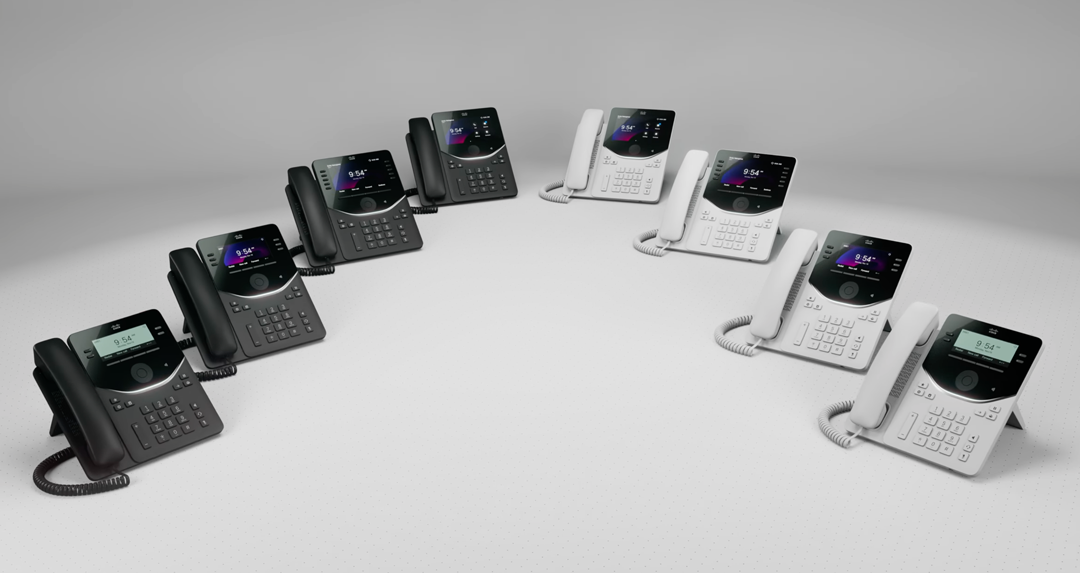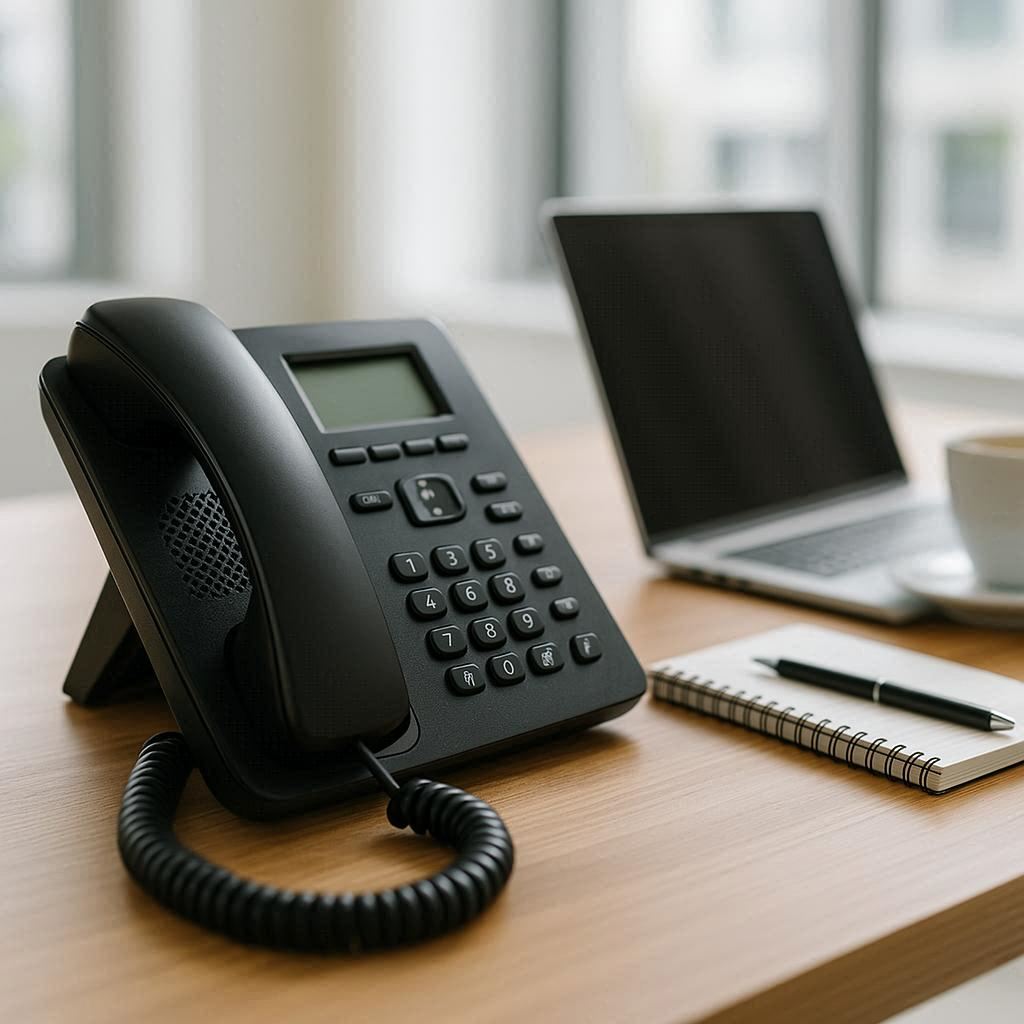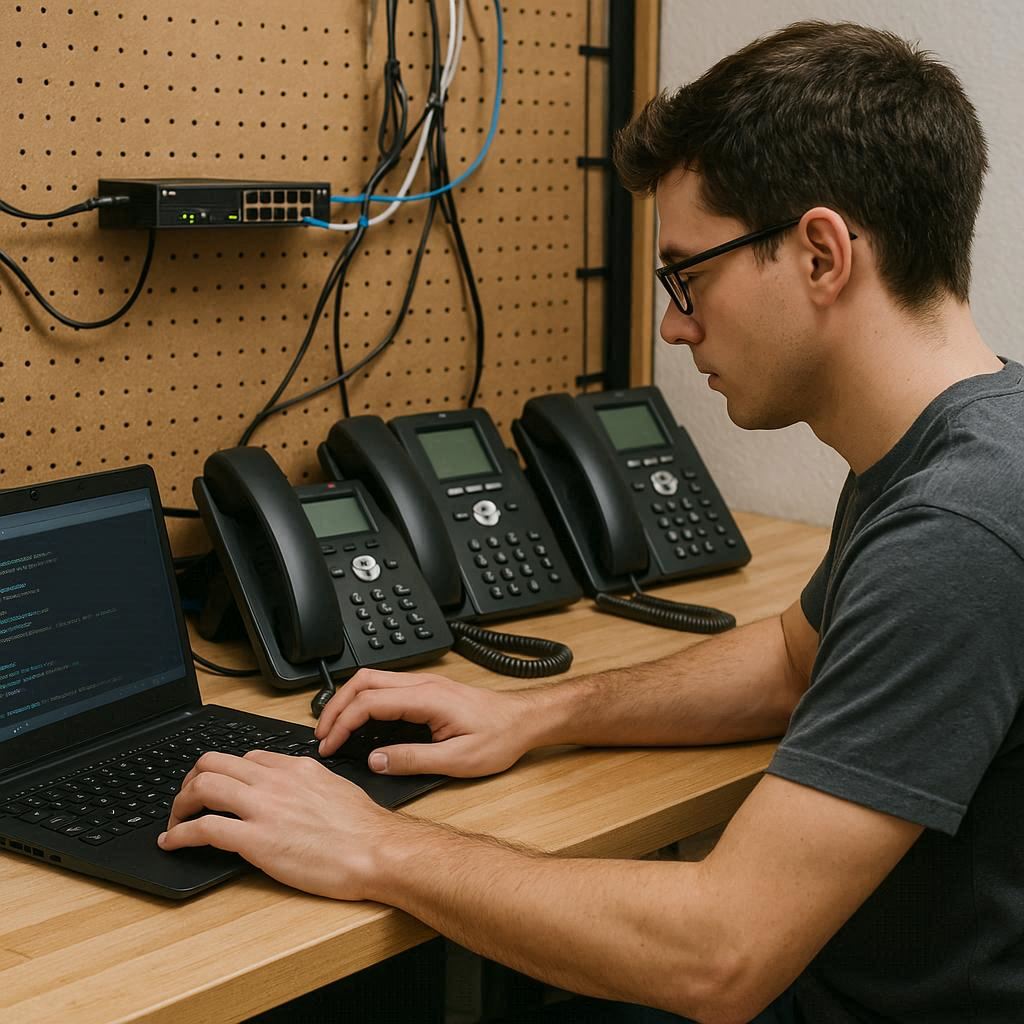When organizations consider moving from a traditional on-premises telephone system to a Unified Communications as a Service (UCaaS), a common question that comes up in the planning is: Do we need to buy all new handsets?
When planning for a Cloud-delivered service, replacing hundreds—or even dozens—of desk phones represents a significant expense. So many of the UCaaS suppliers will offer the option to repurpose your existing handsets to lessen out-of-pocket expenses. And while it is possible to repurpose existing handsets for use with a UCaaS service, there are other factors to consider prior to a commitment. This article explores how that process works, what’s required, and whether it’s the right decision for your organization.
From Proprietary Protocols to Open Standards
Traditional on-premises phone systems and handsets relied on manufacturer-specific operating systems and signaling protocols. These proprietary technologies—such as Cisco’s SCCP, Mitel’s MiNET, and Avaya’s UNIStim—were designed to integrate tightly with the manufacturer’s hardware and software ecosystem.

How it Worked
In these systems, the phone acted as a client to the manufacturer server that hosted the voice application. When a user pressed a button, the phone sent a signal to the server, which dictated the phone’s actions in real time. This centralized command | control allowed manufacturers to deliver very rich enterprise features, simplified troubleshooting, and maintain a strong oversight of the entire system. The trade-off was that the handsets were effectively locked to that manufacturer’s environment.
The Promise of SIP
The introduction of Session Initiation Protocol (SIP) disrupted this proprietary approach. As an open, industry-standard protocol, SIP allows phones to be independent and intelligent. A SIP-enabled device can initiate, manage, and terminate calls directly, without relying on a central server for every function.
In other words, SIP handsets aren’t locked into a single vendor’s ecosystem—they can work with any platform that supports SIP, including most UCaaS providers. It is this interoperability that opens the door to reusing existing handset hardware instead of replacing it.
Why Older Handsets Can Work with UCaaS
If a handset can support a SIP image, it can often be migrated to a UCaaS platform. The process involves:
- Re-flashing the firmware: Overwriting the handset’s proprietary operating system with SIP-compatible firmware.
- Registering with the UCaaS platform: Once re-flashed, the phone can register with any provider that supports SIP.
This is not a provider-specific trick—SIP is an open standard, so the same approach applies across the UCaaS industry. However, not all handsets will qualify.
Checking Hardware Compatibility
Before you start planning a large-scale migration, you’ll need to confirm which handsets can make the transition. Key considerations include:
- Hardware capacity: Older circuit boards may lack the processing power or memory to run new SIP firmware effectively.
- Security certificates: Many older proprietary phones do not have the embedded certificates required for secure UCaaS connections.
- Manufacturer and model support: UCaaS providers typically publish compatibility tables that list approved handset models and firmware revisions. You can find the handset’s revision number on the product label (often on the back of the phone) or through the device’s administration menu.
If a handset doesn’t appear on the compatibility list—or if it lacks the required hardware—it’s usually best to replace it rather than attempt an unsupported upgrade.
The Re-Imaging Process
Once you’ve confirmed that your phones are compatible, you can begin the re-imaging process. The goal is to have a repeatable, documented procedure that minimizes disruption.
Steps to follow:
- Document the workflow
Break the process down into clear steps, noting the average time per handset—usually around 15–20 minutes. - Leverage automation
Use protocols such as TFTP, HTTP, or HTTPS to push firmware updates to multiple devices. Most phones will reboot automatically once the upgrade is complete. - Assign responsibilities
Decide whether the process will be handled by IT staff, end users, or a combination of both. - Schedule a maintenance window
Once re-flashed, the phone may no longer function on the old system. To avoid disruptions, perform upgrades during off-hours or low-traffic periods. - Have a fallback plan
Keep a stock of old-system-compatible handsets in case something goes wrong during migration.
Is It Worth It?
Before committing to re-deploying older handsets, consider both the operational and financial implications.
User adoption patterns:
Most UCaaS migrations do not involve replacing every desk phone one-for-one. Many employees opt for softphones or mobile apps instead of physical handsets. Identifying who still needs a desk phone is an essential first step.
Inventory exercise:
Count how many compatible handsets you have and compare that to the number of users who prefer a physical phone.
Cost savings:
High-end proprietary handsets were once as expensive as desktop PCs. Today, competitive SIP-standard models from manufacturers such as Poly and Yealink often cost less than $200. Some UCaaS providers even rent them for $3–$5 per month. Calculate whether the savings from reusing older phones justifies the effort of re-imaging them.
The Benefits of Standardization
In the era of proprietary systems, standardizing on a single handset model across the organization simplified training, reduced downtime, and lowered repair costs. The same principle holds true with UCaaS—choosing one or two SIP-standard models for the entire company streamlines operations and support.
Even if you plan to reuse older phones during the migration, it may be wise to phase in a standardized SIP model over time. This hybrid approach can give you immediate cost savings while aligning with long-term operational best practices.
What Morefield is Sharing With Our Clients
Migrating existing handsets to a UCaaS platform is a viable option for many organizations, but it’s not without caveats. You’ll need to:
- Verify hardware compatibility
- Establish a structured, repeatable re-imaging process
- Account for user preferences and adoption patterns
- Weigh the savings against the cost of new hardware
For companies with a large inventory of compatible handsets and a user base that still values desk phones, re-imaging can provide a cost-effective bridge into the UCaaS world. For others, the reduction in new handset prices and the flexibility of cloud-based communication may make purchasing new SIP-compatible devices the more straightforward option.
Either way, the key is to plan carefully. A well-executed handset migration—or replacement—will ensure your UCaaS transition is smooth, efficient, and cost-effective.

